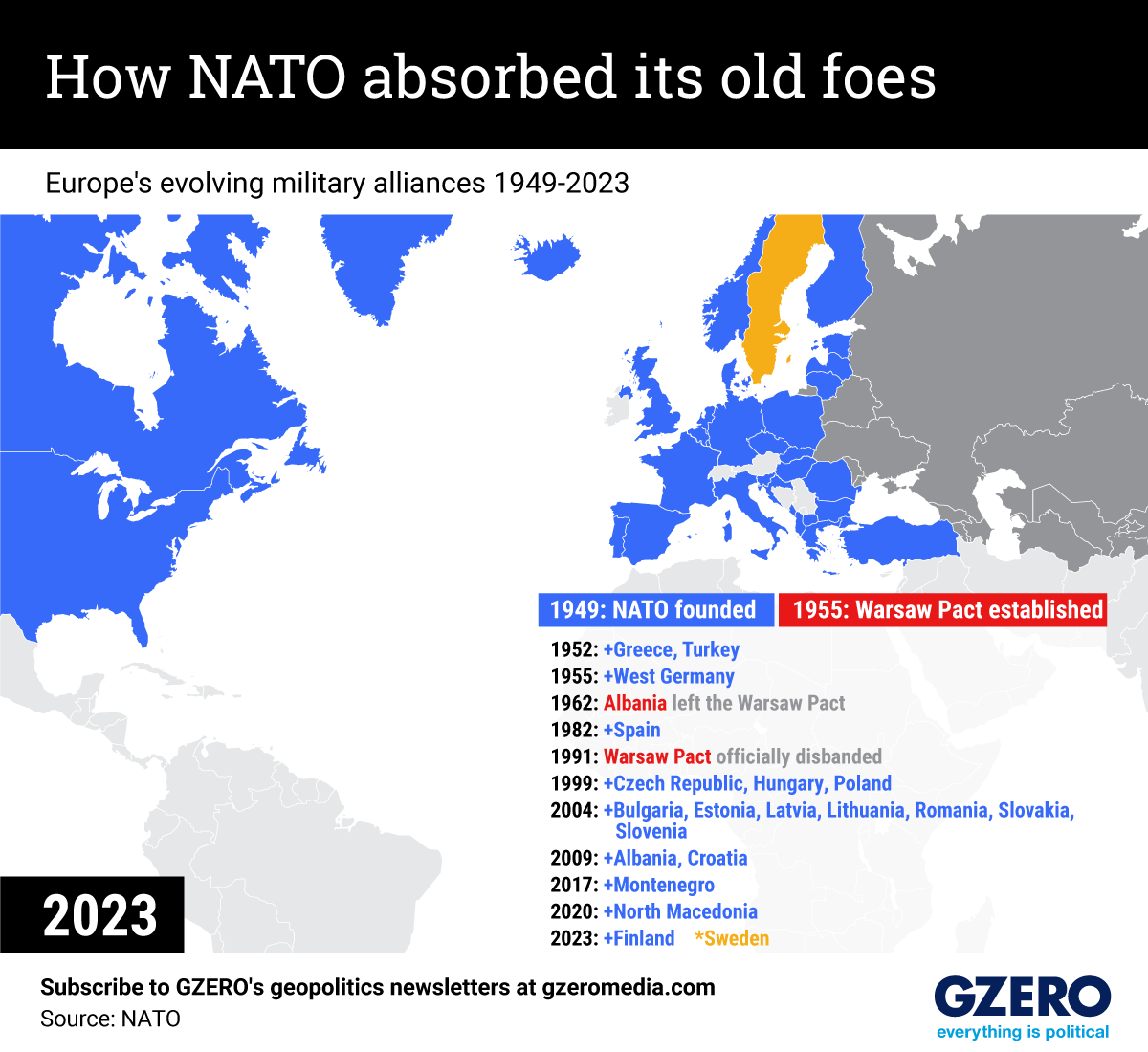The Graphic Truth: How NATO absorbed its old foes
July 10, 2023
For almost half a century, NATO and the Soviet-backed Warsaw Pact alliance glowered at each other from across the Iron Curtain. But after the USSR collapsed, NATO expanded eastward by welcoming former Eastern Bloc members – a development Moscow viewed as a direct challenge to its sphere of influence.
This dynamic has again been a massive point of contention since Moscow unleashed a war against Ukraine, causing states like Finland and Sweden to submit hurried bids to join the defense alliance. Finland joined in the spring. And this week, Turkey's President Recep Tayyip Erdogan, who had been holding up Sweden's bid, finally gave Stockholm the green light. Here's a look at the history of the alliance's expansion.
From Your Site Articles
- The Graphic Truth: Who partners with NATO? - GZERO Media ›
- What We're Watching: Russia's NATO wishlist - GZERO Media ›
- What We're Watching: NATO tries to deter Russia, Ethiopia's war ... ›
- Should NATO embrace Ukraine? - GZERO Media ›
- After Kazakhstan, how will Russia escalate in Ukraine? - GZERO Media ›
- Russia-Ukraine: Don’t expect full-on invasion, but Putin isn’t bluffing - GZERO Media ›
- Russia's actions towards Ukraine are strengthening NATO - GZERO Media ›
- European & US leaders resolute as threat of Ukraine war grows - GZERO Media ›
- Russian cyber attack could trigger NATO’s Article 5, warns NATO Deputy Secretary General - GZERO Media ›
- Putin's NATO miscalculation - GZERO Media ›
- Sweden's NATO membership is imminent after Turkey's approval - GZERO Media ›
- NATO has a Trump problem - GZERO Media ›
- Greece's PM on NATO, Navalny, and the wake-up call to Europe - GZERO Media ›
- Ukraine will define the future of NATO - GZERO Media ›
- Finland’s NATO membership hopes - GZERO Media ›
- Europe and US plan harsh measures if Russia takes action against Ukraine - GZERO Media ›
- From foes to friends: NATO's history of absorbing its enemies - GZERO Media ›
- NATO’s tough choices ahead - GZERO Media ›
- Why Ukraine is the target of Russian aggression – analyst Alina Polyakova - GZERO Media ›
